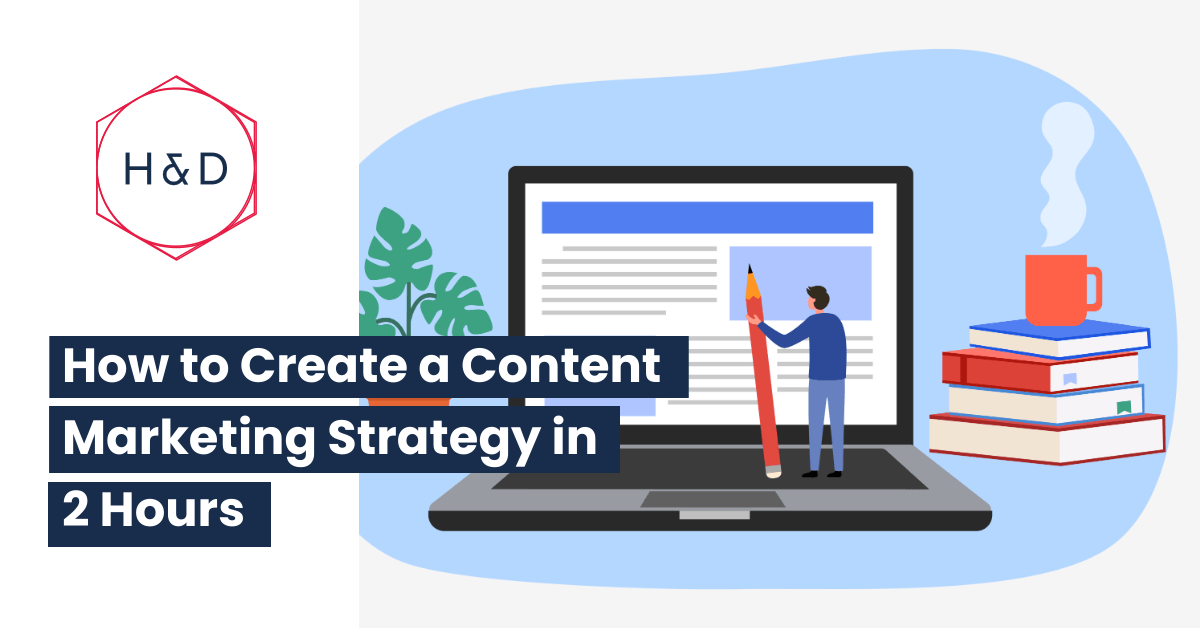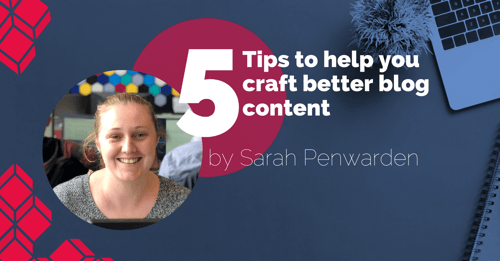
Since the dawn of video platforms like YouTube and more recently TikTok and Instagram Reels, marketers have been questioning the effectiveness of blog content — are people still interested in reading long form content? Does it still help to pave a path towards brand growth?
Thankfully, in 2023 there are still plenty of reasons to create engaging blog content tailored to your unique audience and their needs. And now, with the introduction of generative AI tools like ChatGPT, human storytelling has become even more important for differentiating your content.
At Hype & Dexter, we've heard it all from the companies we engage with:
"We want to embrace content marketing, but where do we even begin?"
"We're swamped with other tasks; creating a content strategy seems impossible!"
"Can we really achieve results in such a short time?"
Well, hold onto your keyboards because we've cracked the code! Picture this: a content marketing strategy perfectly in sync with your audience's personalities, catering to their buyer's journey, and even skyrocketing your organic traffic through nifty SEO tricks – all whipped up in under two hours!
Let us spill the beans on H&D's legendary content strategy session. Buckle up, because by the end of this article, you'll know why our method rules and how it's primed to launch your content marketing success straight into the stratosphere in 2023 and beyond. Let's dive right in!
Can you still compete for organic traffic in 2023?
First, let’s take a look at a few interesting numbers. According to Web Tribunal:
- There are over 600 million blogs out of 1.9 billion websites in the world;
- Over 6 million blogs go live DAILY, or over 2.5 billion annually;
- This means that about one-third of all current websites are blogs.
Which begs the question — what’s the point in trying when you’re just a tiny needle in a giant digital haystack?
Because, as the digital realm evolved, so did the competition. Medium-tail keywords, long-tail keywords – we've all had to jump through hoops to keep up. And now, as we fast-forward to the tech-savvy present, the challenge has only intensified. But there is still hope! The stage is set for those who dare to dream big, innovate, and stand out from the crowd, and competing for organic SEO traffic in 2023 is still a game worth playing.
We use the Topic Cluster Model
With search engines being smarter than ever before — recognising user intent and offering unique results based on location, user behaviour, etc. — we can take advantage of these updates by creating content that appeals to key factors like Google’s E-E-A-T (Experience, Expertise, Authority, Trustworthiness).
The topic cluster model does just that, and has multiple benefits, like improving your site architecture and making it easier for search engines to find related content. The end result is improved search engine visibility.
Topic cluster model hones in on topics instead of keywords. By choosing a base of core topics that apply to your website, we create a foundation on which all your content is organised. Think of it as a tree with multiple strong branches that support smaller branches instead of a single trunk with smaller branches coming off of it. The smaller branches represent content with those specialised long-tail variation keywords that boost your SEO.
.png?width=1200&height=400&name=Untitled%20design%20(1).png)
The Topic cluster model focuses on owning topics first, and then looks at the relevant keywords second, through simple research and validation. By choosing a base of core topics that apply to your personas, we create a foundation of content that is absolutely relevant to their buyer's journey and on which all your content is prioritised and organised. And the great thing about this method is, when one of the branches perform well, it boosts the rest of the topics in the cluster!
How do we develop a content strategy in just 2 hours?
Here at H&D we have created and implemented a methodology for our content strategy sessions that our clients love. Not only that but it also gives them clear strategic direction, well defined topics, a thought-out SEO and friendly architecture, and at least 12 months of content ideas - all in 2 hours.
Our Content Strategy Workshop
Our 2 hour workshops allow us to dive deep into aspects that support content creation and ensure we are creating successful content pieces.
For this session to be successful we need:
- Well researched buyer personas, and their goals and challenges
- Research into topics, questions and keywords that our target audience is searching for
- Key marketing, sales, and operations people who deal with and understand your customers
- A facilitator who understands the business, the buyer's journey, the topic cluster model, and can lead the conversation
- Lots of post-it notes and pens!
- At least 90 minutes
Step 1: Look at the “why?”
We start off by explaining the 'why'. Why we produce content, what we are trying to achieve (the right answer is "to guide users through the buyer's journey"), and how to create content that performs brilliantly for SEO.
We then do a recap of the buyer's journey so that everyone in the room is clear on what we are trying to achieve.
Step 2: Describe the personas
We look again at our personas, their goals and challenges, and what their key questions would be as they go through the buyer's journey.
Step 3: Brainstorm content ideas (this is where the magic happens)
After explaining the topic cluster approach, everyone in the room gets a pile of post-its, and they are all encouraged to start writing down ideas of what content we could create to answer our personas' questions/help them achieve their goals / overcome their challenges.
We encourage discussion as thoughts are written down, which allows ideas to bounce off one another and helps generate more answers — there are no wrong answers at this stage!
We write down anything and everything that comes to mind, and brainstorm around 100-200 ideas within an hour. Once we feel that our best ideas are on the table, we then stand up and look for ideas which are similar to one another. Don’t overthink this step to start with, just look for any similarity amongst what is written down, and start to group them together. You will slowly begin to identify themes, call these out as they emerge.
Once everything is in groups, stop to validate them and see if the groups make sense. Can the larger ones be split out any further? Could any small or solo groups be combined into a slightly larger group?
Now, think about what themes have emerged and give them labels. These are your topics. Next, you need to decide on a priory for these.
The next step is to identify any strategic directives for content that have been discussed or that have emerged from the exercise. These will often be things that were written down multiple times in the workshop, or things that have been written down but don't really belong in one group, as they are applicable everywhere! Make sure the strategic directions are aligned with your business goals: e.g.: all our content should come back to the benefit of “how we save businesses time”.
.png?width=1200&height=628&name=H%26D%20%20Blog%20Header%20Template%20%202022%20(3).png)
Validating & executing your content strategy
Once you have determined which topics to prioritise (based on most business capacity we usually recommend choosing 3 topics to address each stage of the buyer's journey to prioritise) and strategic direction, we have to validate the work.
HubSpot has a great tool that not only lets you build topic clusters, but also lets you see search volume for the terms you’re using, so you know you’re hitting the mark with keywords as well. Using HubSpot, you can also see the similarity between the topics and subtopics, which are key to the SEO benefits of the topic cluster model.
Crafting the Content Schedule
Once our topics and terms have been validated, we then create a content schedule. Typically we plan three months upfront, as that's a practical amount of time to roll out the new strategy, and assess before moving forward. But we’ve usually got more than enough content for the next 12 months or more just from this one simple session!
The content marketing benefits that you will reap from following this approach and running the structured two hour session will amaze you. By making a plan and getting your team aligned to start working, you will have taken a giant step forward.
Of course, the final piece of the puzzle is execution of your content strategy. Your capacity or budget will ultimately dictate how much content you can create, and how frequently you can create it. There's also a lot to say about what types of content to create — enough for a separate post!
So, what's next? Armed with your newfound wisdom, dive headfirst into crafting compelling content, optimising your website, and nurturing those oh-so-important backlinks. Remember, every click counts, every keyword matters, and every connection strengthens your online presence.
If you're ready level up your content game, fill out the form below and we'll get you booked into one of our legendary Content Strategy sessions. We'll take you through the whole process, so you can take on the dynamic world of content head on!



